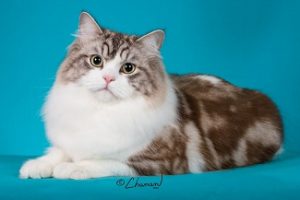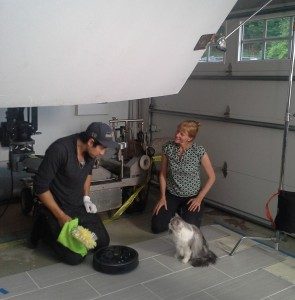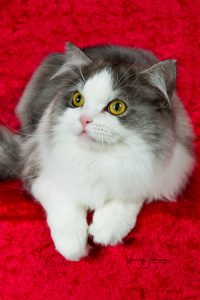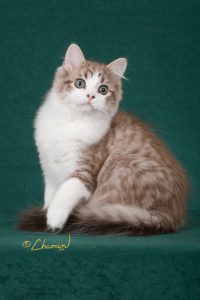
Author Sara Thornton iCandy RagaMuffins
As a breeder, I have a great responsibility, no matter what life I am producing. I have bred Quarter Horses, Labrador Retrievers and RagaMuffin cats. I believe my skills have improved over the years. It’s a learning curve for sure. The most important attribute a breeder can have is a clear goal. Every animal, every litter, should have a goal.
I believe experience has given me a more precise vision. I do believe in competition to force me to take off rose colored glasses and see my animals for what they are. That being stated, it does not mean I think the judge is necessarily always right. Competition gives me a gauge about where I need to go in my breeding program.
Breeding is an art that deals with so much more than looks. It’s complicated. The end result should be healthy, have the desired temperament AND look like the description in the breed standard and, in the case of Labradors, do what the breed was developed to do.
The breed standard is the Bible for every breeder. Each breed has a description of the ideal specimen. The aim is to come as close as possible to the ideal. The interpretation of the breed standard may vary from breeder to breeder. Since no animal is perfect, one breeder may focus on one part of the standard more than another breeder. For example, in RagaMuffins, one breeder may strive for the perfect muzzle, while another emphasizes the eyes.
Take that goal for looks, add to it proper structure and a strong immune system to allow for comfortable longevity. Add to that eliminating or at least reducing genetic diseases through DNA testing and health clearances and then top it off with a temperament that is typical for the breed. That’s a tall order. But, the holy grail of every responsible breeder is to strive for perfection.


 author Sara Thornton DVM
author Sara Thornton DVM  with babies. You have to take a lot of stuff such as food, crates and litter. You have to make prior arrangements for pet friendly hotels and make sure they are safe and kept cool during rest stops. My friend helped me by taking turns staying with them for rest and lunch stops. RagaMuffin Monty was traveling with his sibling Reggie and although Monty was my most seasoned traveler, due to going to cat shows, he was the worst for being the most vocal. He has never liked staying at hotels but was better on this trip because Reggie had to be confined at all times. Reggie is extremely anxious and would be too hard to catch if loose. Monty is extremely friendly and comes when called. However, I still did not want to take any chances of him escaping if something were to frighten him. I had, of course, taken them both to the vet for shots to be sure they were in good health to deal with the trip. I had asked for sedatives in case they were needed and also medication for diarrhea, should it become an issue from to stress. I was lucky and never needed either medication. Monty who was loose in the hotel room in the evenings, was a good brother and often slept close to Reggie’s play pen to comfort and help relax him.
with babies. You have to take a lot of stuff such as food, crates and litter. You have to make prior arrangements for pet friendly hotels and make sure they are safe and kept cool during rest stops. My friend helped me by taking turns staying with them for rest and lunch stops. RagaMuffin Monty was traveling with his sibling Reggie and although Monty was my most seasoned traveler, due to going to cat shows, he was the worst for being the most vocal. He has never liked staying at hotels but was better on this trip because Reggie had to be confined at all times. Reggie is extremely anxious and would be too hard to catch if loose. Monty is extremely friendly and comes when called. However, I still did not want to take any chances of him escaping if something were to frighten him. I had, of course, taken them both to the vet for shots to be sure they were in good health to deal with the trip. I had asked for sedatives in case they were needed and also medication for diarrhea, should it become an issue from to stress. I was lucky and never needed either medication. Monty who was loose in the hotel room in the evenings, was a good brother and often slept close to Reggie’s play pen to comfort and help relax him.

